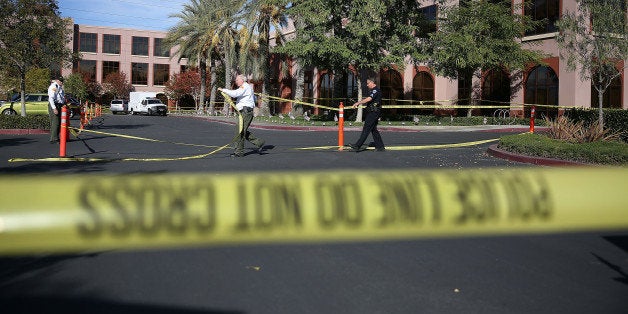
When it comes to mass shootings, or I should say what to do about mass shootings, the argument is usually pro-gun folks versus gun violence prevention (GVP) folks and the argument usually turns on whether or not these shootings occur in what are called 'gun-free' zones. The pro-gun strategy for dealing with mass shootings is the usual pro-gun solution for all gun violence; namely, respond with more violence in the form of arming civilians and getting rid of 'gun-free' zones. The GVP strategy is, well, there isn't a single strategy because what's the point of trying to figure out what to do about something that we seem unable to define?
The latest contribution to the GVP mass shooting discussion comes from Mark Follman, a Mother Jones editor, who has become a major voice in the mass shooting debate since attending the annual conference of the Association of Threat Assessment Professionals (ATAP) at Disneyland this past August where 700 attendees talked their heads off about what to do to deal with the threat of mass shootings. Threat assessment has become big business and the scenario painted by threat assessment companies is scary enough to convince just about anyone that we need to take all threats seriously. Here's why threat assessment is so important, as described by a company called At-Risk International, which provides security to "companies, individuals and families who face threats in the workplace, at home, on vacation, around the world. Kidnappers. Stalkers. Terrorists. The list goes on and on."
The truth is that ATAP is basically a trade association representing private security companies that have transitioned from local outfits offering guard services and other basic security protections to international companies like Kroll Security, which gained notoriety when it was hired to find the personal assets of various deposed dictators like Ferdinand Marcos and Jean-Claude Duvalier. Companies like Kroll and At-Risk have been financial beneficiaries of the War on Terror for obvious reasons, so why not add another notch to the ever-expanding list of threats by protecting us from mass shooters?
Maybe an ATAP-certified threat assessment professional convinced the Disney Corporation to ban toy guns and install metal detectors at its theme parks, but if we perceive that mass shootings are on the rise and, as Follman argues, such perceptions will generate "undue fear and bad policies," then perhaps it really is time for GVP activists to define mass shootings in a consistent and logical way. Follman himself claims there have been four mass shootings in 2015, the Feds say there have been six, but the Shooting Tracker website says there have been nearly one every day, and of course it's this inflated number that ends up driving the debate.
The main difference between Follman and the Feds versus the Shooting Tracker is that the latter counts multiple persons hit with bullets from the same gun whether they survived or not, whereas Mother Jones and the FBI only consider a mass shooting to have occurred when at least three or four persons get killed. As a result, of course, mass shootings that occur in public places like Umpqua CC and San Bernardino get all the attention because the shooters go to public locations where, to paraphrase Willy Sutton, that's where you find lots of people.
But I happen to believe that if we are concerned with eliminating mass shootings as an aspect of overall gun violence, the approach of Shooting Tracker and others who don't distinguish between dead and injured is the way to go. And the reason I believe the GVP community should adopt this latter definition is because there's a good chance that many mass shootings result in fewer killed than wounded simply because skilled trauma surgeons save many shooting victims who otherwise would wind up dead.
In the last nine mass shootings over just 11 days, according to the Shooting Tracker, 7 were killed and 30 were wounded but survived. And we're spending our talents and energies wondering how to label such events?
